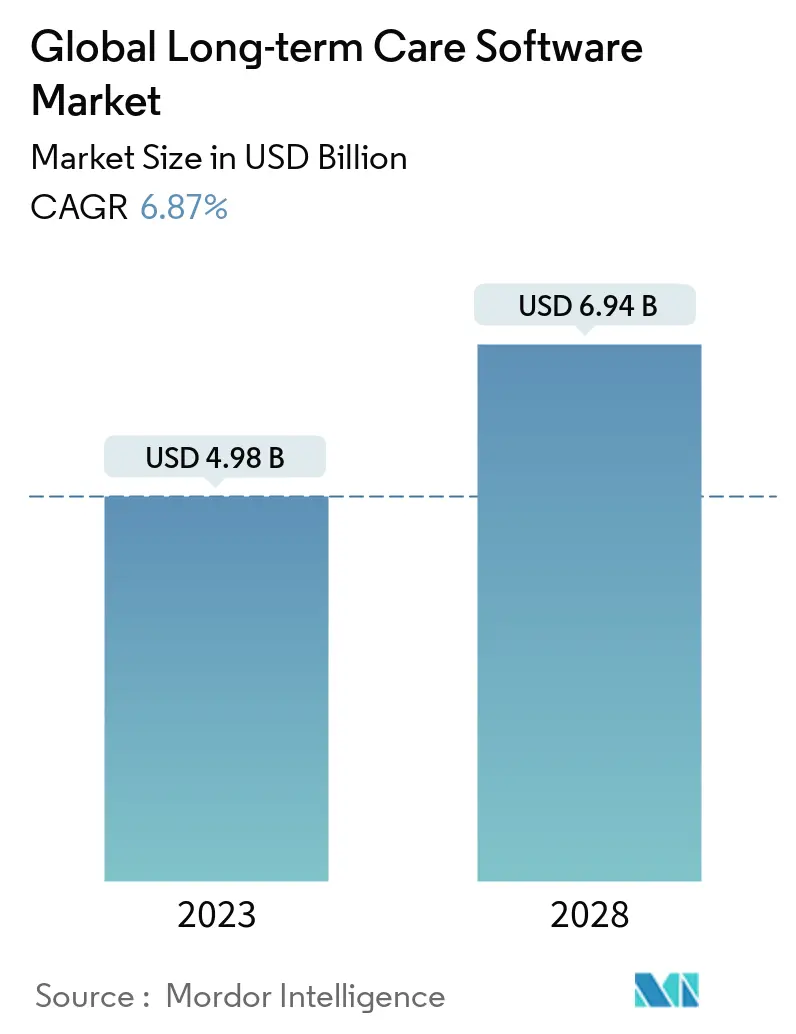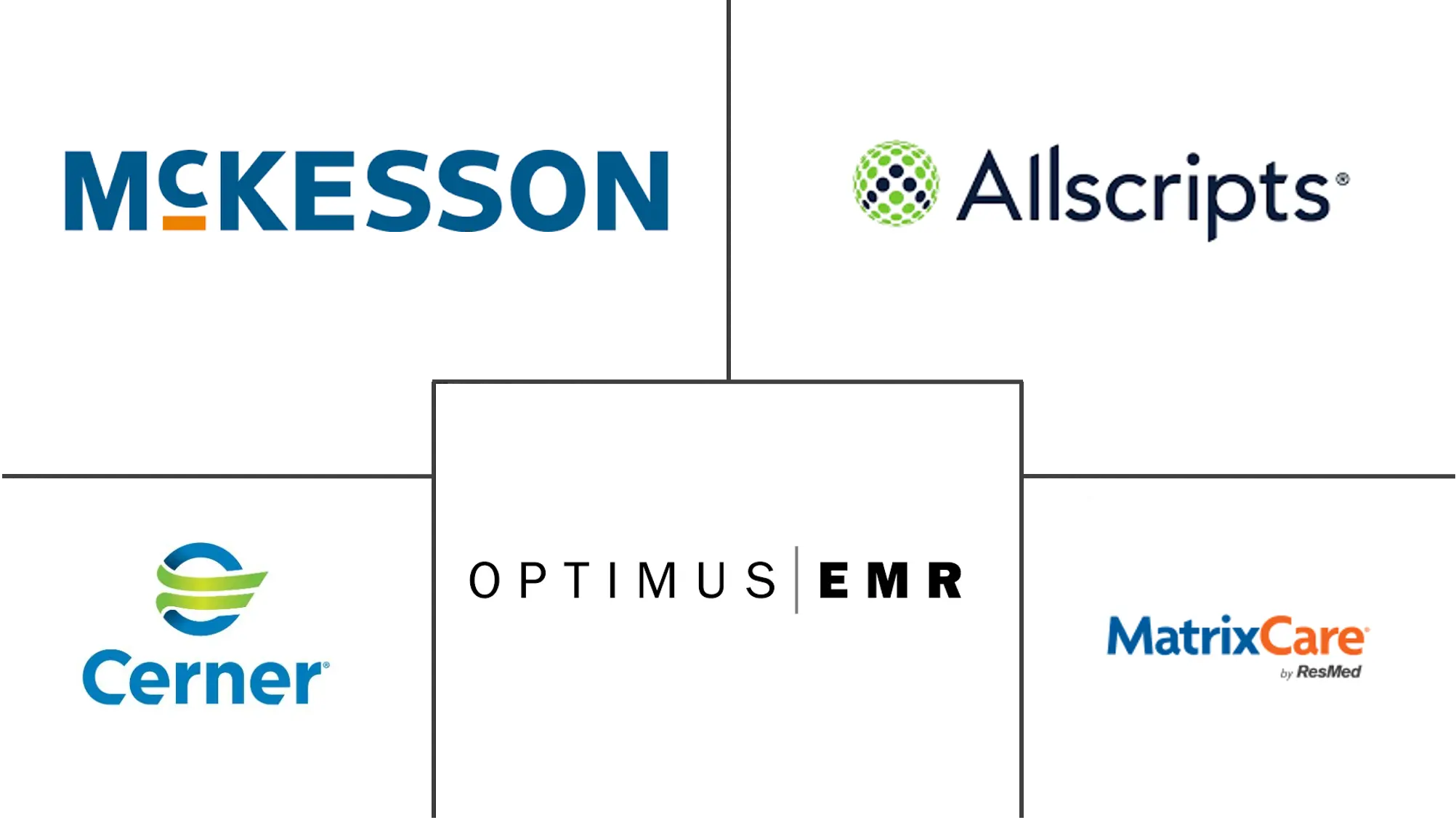Market Size of Global Long-term Care Software Industry

| Study Period | 2018 - 2028 |
| Market Size (2023) | USD 4.98 Billion |
| Market Size (2028) | USD 6.94 Billion |
| CAGR (2023 - 2028) | 6.87 % |
| Fastest Growing Market | Asia Pacific |
| Largest Market | North America |
Major Players
*Disclaimer: Major Players sorted in no particular order |
Need a report that reflects how COVID-19 has impacted this market and its growth?
Long Term Care Software Market Analysis
The Global Long-term Care Software Market size is expected to grow from USD 4.98 billion in 2023 to USD 6.94 billion by 2028, at a CAGR of 6.87% during the forecast period (2023-2028).
The COVID-19 pandemic affected the elderly population excessively, particularly those who are living at long-term care facilities (LTCF), with a significant impact on mortality and morbidity. As per the study article “COVID-19 excess mortality among long-term care residents in Ontario, Canada” published in January 2022, the mortality rate among long-term care residents was higher. Thus, strenuous action is required to alleviate the impact of COVID-19 by enhancing infection prevention and control (IPC) measures within LTCF with novel and advanced LTC software and solutions in order to track and manage the patients at LTCF affected with COVID-19. In November 2020, GHD revealed four new advanced solutions, namely SimpleTrack, Contact Connect wearables, Appointed, and Wastewater testing service, intended to increase the safety of residents in long-term care facilities through contact tracing, appointment bookings, and early notification of COVID-19 trends.
The major factors attributing to the growth of the long-term care software market are the healthcare reforms and government initiatives, the rise in the aging population, and the growing burden of chronic diseases. As per the data from World Health Organization, the number of people aged over 60 years and above is expected to reach 1.4 billion by the year 2030 and is projected to reach 2.4 billion by year 2050. As old people require more care, the market studied is believed to witness strong growth in future.
Among the patients requiring long-term care, some of the most frequent chronic medical conditions include hypertension, gastroesophageal reflux disease, diabetes, atrial fibrillation, anemia, arthritis, congestive heart failure, constipation, chronic obstructive pulmonary disease, cerebrovascular disease, dementia, osteoporosis, Parkinson's disease, peripheral vascular disease, renal failure, and thyroid disorders, amongst others. According to Alzheimer's Disease International, globally, there were around 50 million people with dementia in 2020. This number is expected to double every 20 years, reaching 82 million in 2030 and 152 million in 2050. Therefore, to control and monitor such a large section of the old age population, prone to any chronic disease, at any point of time, even if the disease is being occurred once, it is important to get them monitored at home care, nursing facility, or community centers, as well as assisted living centers. The importance of software and devices to connect to these centers, as well as patients, becomes a necessity, and thus, acts as one of the major drivers for the market studied.
Government policies and acts, such as the Health Information Technology for Economic and Clinical Health Act (HITECH), improve the healthcare quality, safety, management, and efficiency, including the electronic health records (EHRs) and a private and secure electronic health information exchange. Such type of information exchange is vital in proper disease management, in order to alert the clinicians in a timely manner.
